Exploring Bangladesh’s Mughal-Era Marvels
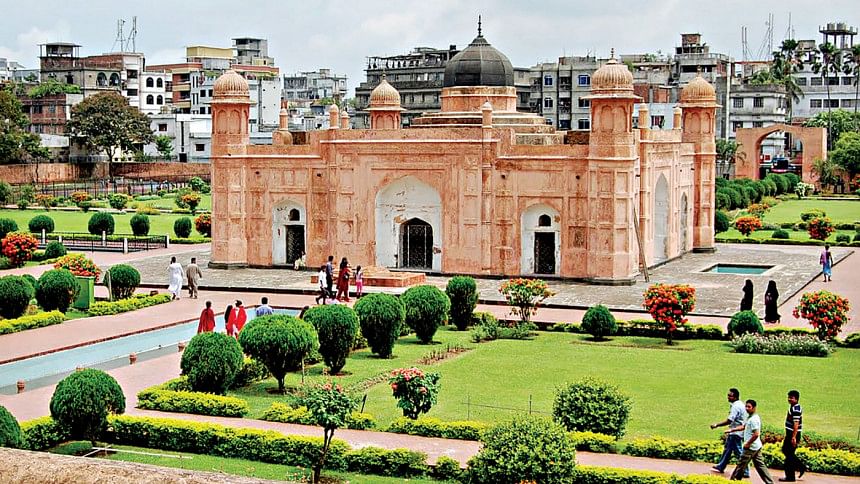
Bangladesh boasts a rich heritage of Mughal-era architecture, reflecting the grandeur of the Mughal Empire. Historical monuments from this period still stand across the nation, bearing witness to its glorious past. Mughal structures in Bangladesh showcase a strong Islamic influence, featuring architectural elements such as domes, pointed arches, turrets, and minarets, making them enduring symbols of the region's cultural and historical identity.
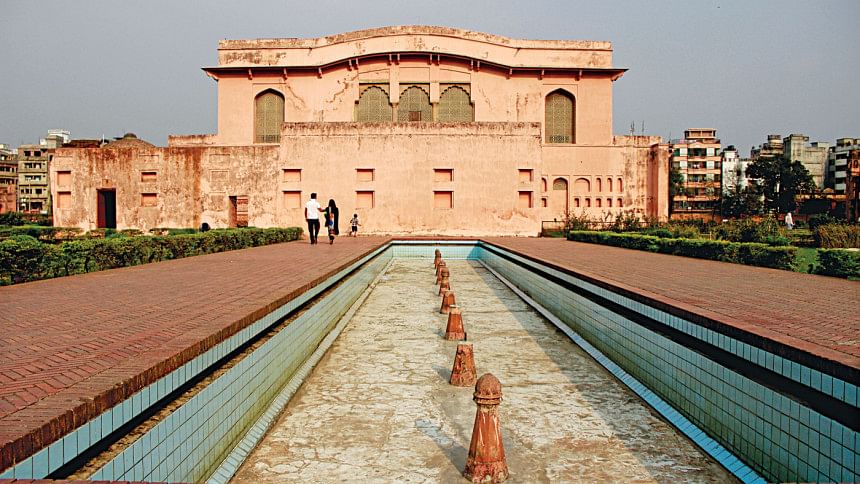
Lalbagh Fort, Old Dhaka
Lalbagh Fort, a captivating Mughal masterpiece situated in Old Dhaka, was commissioned in 1678 by Prince Azam Shah, the son of Emperor Aurangzeb, during his subahdari in Bengal. He later handed over the construction work to his successor, Shaista Khan. However, due to the untimely demise of Khan's daughter, Pari Bibi, within the fort in 1684, he discontinued the construction, deeming that the fort was cursed. Blending Islamic and Persian architectural styles, the fort includes a mosque, Diwan-i-Aam (audience hall), 'hammam' and the beautifully crafted tomb of Bibi Pari in white marble. Though incomplete, the grand arches and lush gardens of the fort remain a symbol of Dhaka's Mughal legacy and offer a glimpse into the era's architectural grandeur and historical significance.
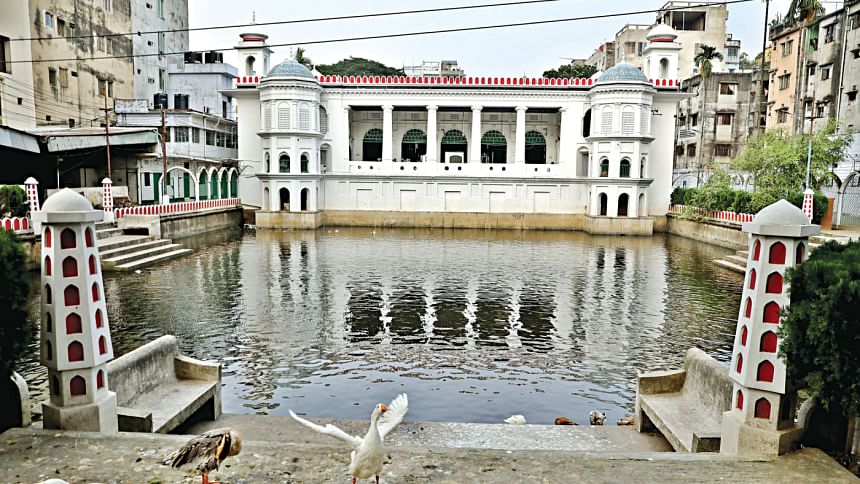
Hussaini Dalan, Old Dhaka
Hussaini Dalan, a prominent Mughal-era structure nestled in Old Dhaka's Bakshi Bazar, stands as one of the city's oldest and most revered imambaras. Established in the 17th century, this house of mourning serves as a memorial to the fateful Battle of Karbala, where Imam Hussain, the grandson of the Prophet Muhammad (PBUH), met a tragic end alongside his followers. Each year, Hussaini Dalan transforms into a vibrant gathering place for the Shia community during Muharram, echoing the sorrowful legacy of Karbala. Over time, the edifice has woven together Mughal and British architectural influences, creating a unique structure steeped in both spiritual reverence and historical mystique.
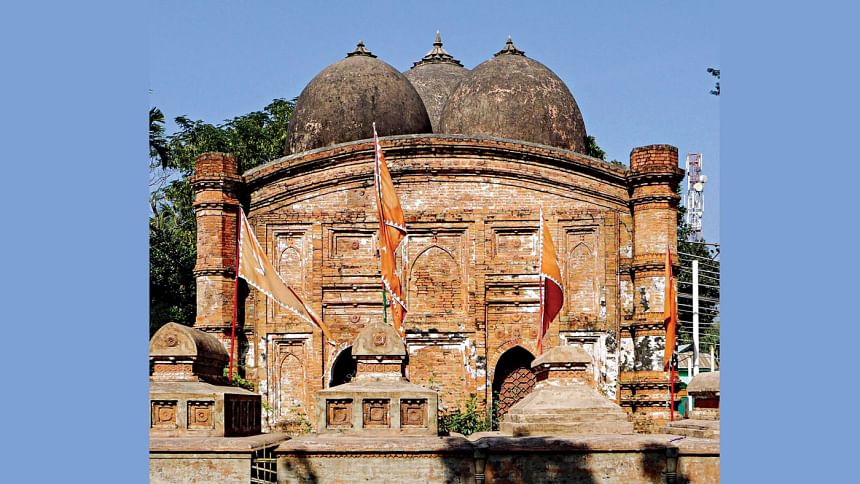
Qutb Shah Mosque, Kishoreganj
The five-domed Qutb Shah Mosque, built in the late 16th century, stands in the heart of Astogram amid the vast wetlands of Kishoreganj. Named after a local saint, Qutb Sahib, this brick mosque embodies both the innovative and the traditional nature of the Bengali architect. Its gracefully curving form echoes the two-storied Bengali house designs of the era, merging with the landscape along the bay's tranquil shores. An ornate terracotta pattern frames the central entrance, welcoming worshippers into an open courtyard. It once served as a significant religious center for the region, reflecting the Mughal rulers' commitment to spreading Islam and their architectural influence in Bengal.
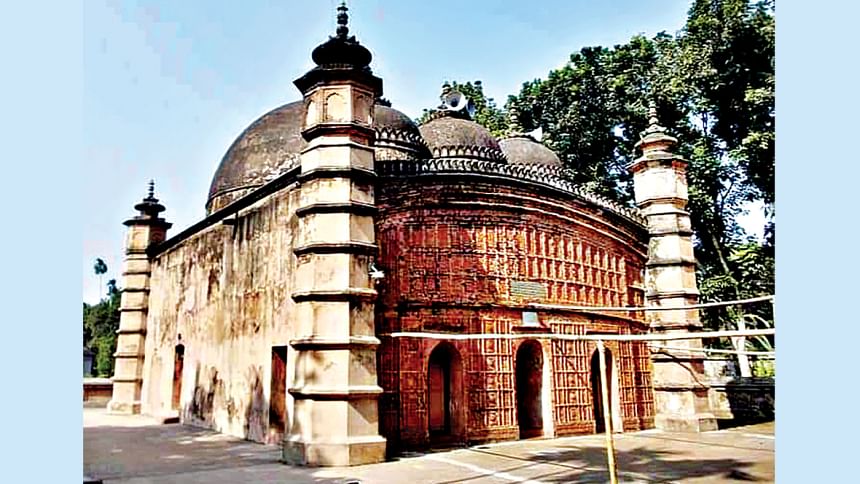
Atiya Mosque, Tangail
The Atiya Mosque, built in 1609 by Sayid Khan Panni in honor of the saint Pir Ali Shahansha Baba Kashmiri, stands as a remarkable symbol of architectural transition during the early Mughal period in Bangladesh. Located in Tangail, it beautifully combines Sultanate and Mughal features, with its square-shaped prayer hall, terracotta ornamentation, and curved cornices reflecting Sultanate influences. Meanwhile, Mughal characteristics like the dome with octagonal shoulders, plastered turret, and intricately decorated niches add a distinct imperial flair. This mosque not only showcases exquisite craftsmanship but also commemorates the spread of Islam in the region, making it a historic and architectural gem.
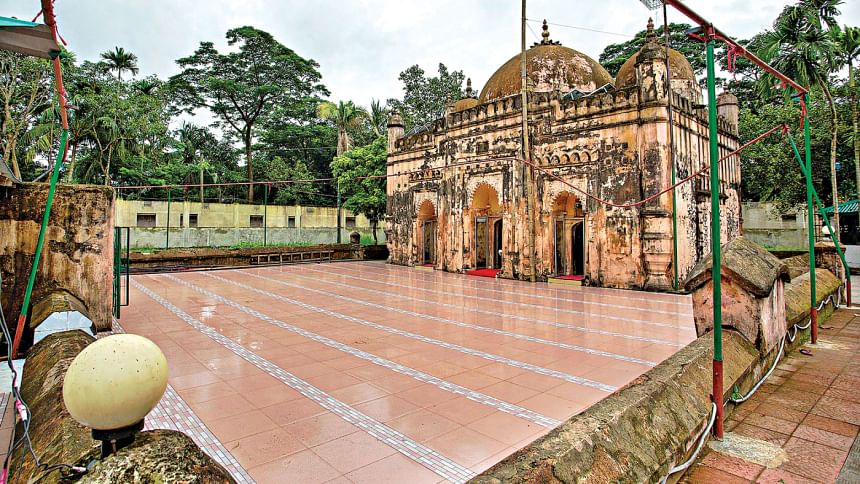
Bakshi Hamid Mosque, Chattogram
The Bakhshi Hamid Mosque in Hilsha village, Chattogram was built in 1692. This mosque is believed to have been constructed by Bakhshi Hamid, despite an inscription attributing it to Sulaiman Karrani in 1568, likely placed there later. The mosque's structure, with its three bubble-shaped domes on octagonal drums, intricate terracotta plaques, and ornate central mihrab, reflects a captivating mix of styles. Its imposing towers, crowned with lotus and kalasa finials, and its exquisitely detailed archways make it a historical treasure and a testament to the region's rich architectural legacy.
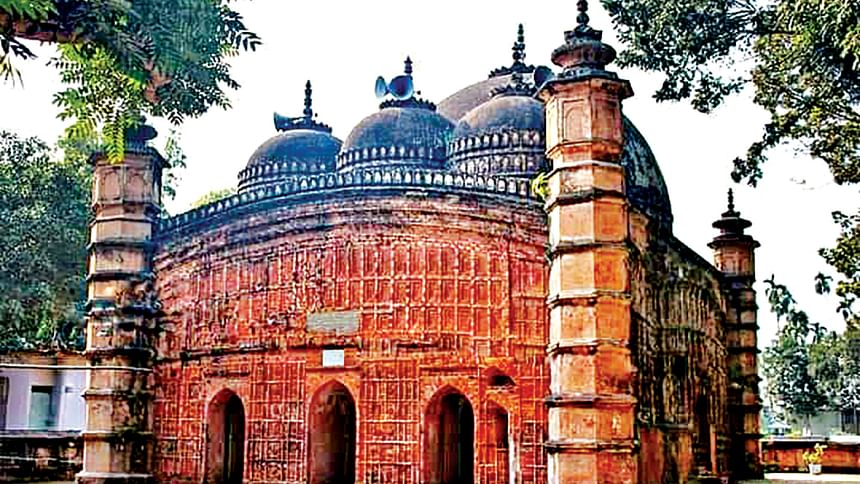
Photos Courtesy: STAR FILE

 For all latest news, follow The Daily Star's Google News channel.
For all latest news, follow The Daily Star's Google News channel. 



Comments